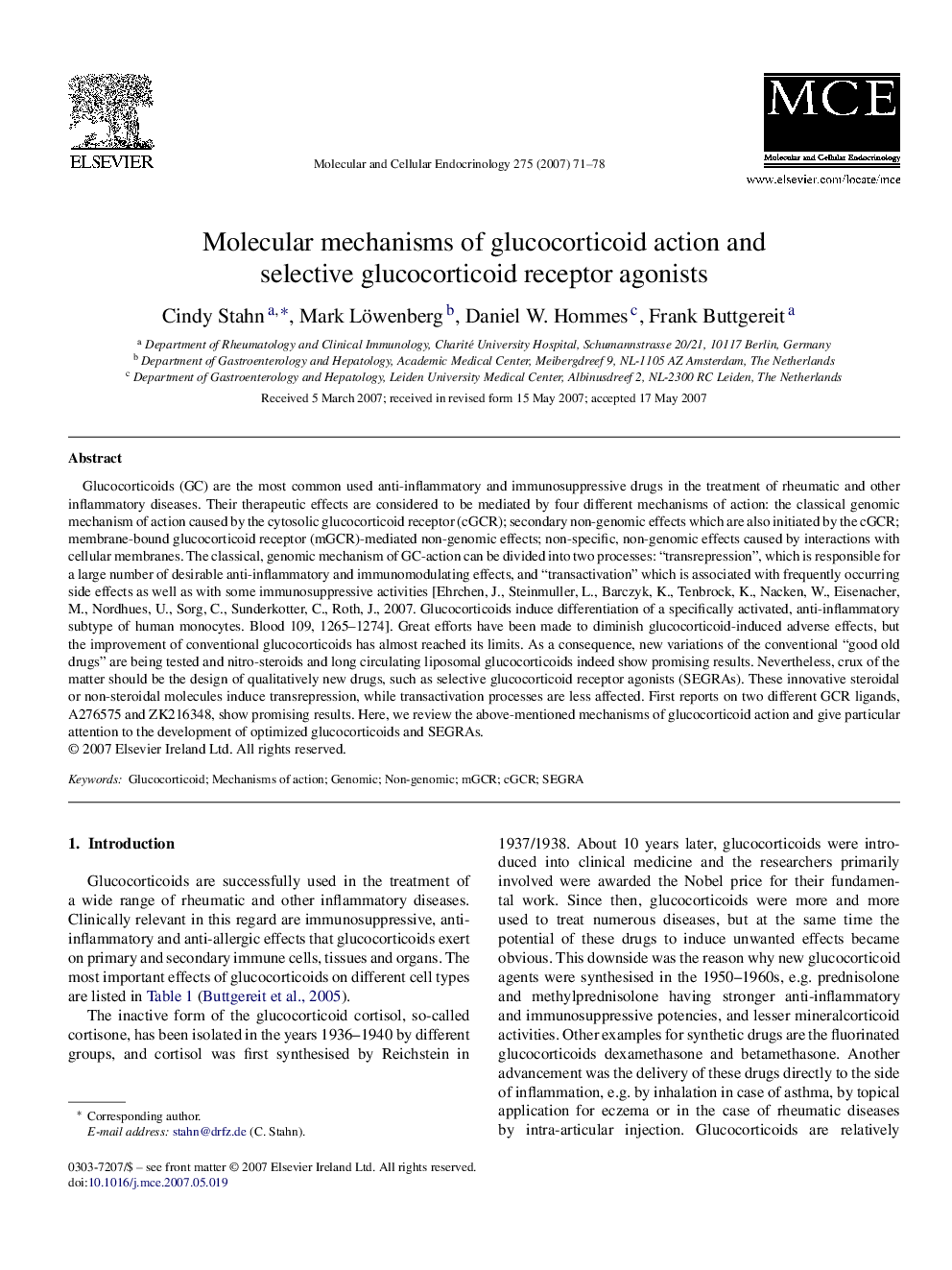| Article ID | Journal | Published Year | Pages | File Type |
|---|---|---|---|---|
| 2197832 | Molecular and Cellular Endocrinology | 2007 | 8 Pages |
Glucocorticoids (GC) are the most common used anti-inflammatory and immunosuppressive drugs in the treatment of rheumatic and other inflammatory diseases. Their therapeutic effects are considered to be mediated by four different mechanisms of action: the classical genomic mechanism of action caused by the cytosolic glucocorticoid receptor (cGCR); secondary non-genomic effects which are also initiated by the cGCR; membrane-bound glucocorticoid receptor (mGCR)-mediated non-genomic effects; non-specific, non-genomic effects caused by interactions with cellular membranes. The classical, genomic mechanism of GC-action can be divided into two processes: “transrepression”, which is responsible for a large number of desirable anti-inflammatory and immunomodulating effects, and “transactivation” which is associated with frequently occurring side effects as well as with some immunosuppressive activities [Ehrchen, J., Steinmuller, L., Barczyk, K., Tenbrock, K., Nacken, W., Eisenacher, M., Nordhues, U., Sorg, C., Sunderkotter, C., Roth, J., 2007. Glucocorticoids induce differentiation of a specifically activated, anti-inflammatory subtype of human monocytes. Blood 109, 1265–1274]. Great efforts have been made to diminish glucocorticoid-induced adverse effects, but the improvement of conventional glucocorticoids has almost reached its limits. As a consequence, new variations of the conventional “good old drugs” are being tested and nitro-steroids and long circulating liposomal glucocorticoids indeed show promising results. Nevertheless, crux of the matter should be the design of qualitatively new drugs, such as selective glucocorticoid receptor agonists (SEGRAs). These innovative steroidal or non-steroidal molecules induce transrepression, while transactivation processes are less affected. First reports on two different GCR ligands, A276575 and ZK216348, show promising results. Here, we review the above-mentioned mechanisms of glucocorticoid action and give particular attention to the development of optimized glucocorticoids and SEGRAs.
